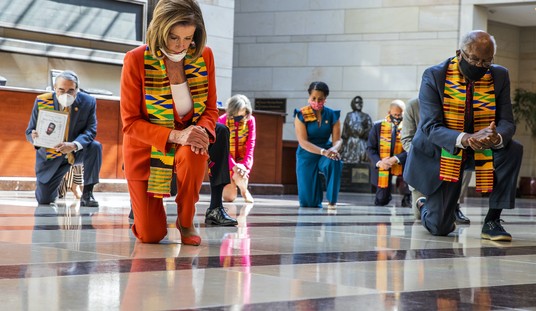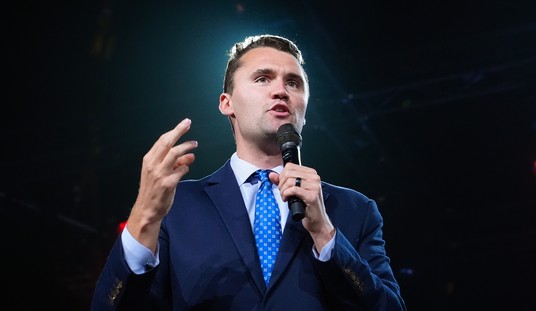
On Friday, New York Magazine author Eric Levitz published a Left wing rant highly critical of tax reforms Kansas implemented in 2012. The back-benchers at Salon, predictably followed. The article, ironically published during Sunshine Week, severely muddled the process and impact of Kansas’ tax reforms – not to mention economic reality. Further, it misrepresented research conducted by the respected non-partisan Kansas Policy Institute (KPI). KPI is a leading state-based organization invested in the long-term health of the Kansas economy.
KPI cares, unlike the many Left-wing commentators who only deign to discuss “flyover states” insofar as they can fabricate a big-government narrative. Aside from the brief recap of how Kansas’ tax reforms came into existence, Levitz also attempted to tie each remaining Republican Presidential candidate to the reforms, telling the reader to “demand that Donald Trump, John Kasich, and Ted Cruz explain why their tax policies won’t fail America in the same way they’ve failed the people of Kansas.” This rhetorical sleight of hand betrays Levitz’s biggest flaw – it’s Kansas’ tax plan, not Trump’s, Kasich’s or Cruz’s. That each candidate must be made to answer for one state’s reforms is a conclusion derived from strained logic. None of the remaining candidates worked on the 2012 tax reforms, and each of their actual plans have several distinguishing elements.
Regardless, the Kansas tax reforms are hardly the policy albatross Left wing pundits so desperately want them to be. The drumbeat of anti-reform commentary has perpetuated a series of myths that impede both future policy improvements in Kansas, as well as the path to pro-growth reforms in other states. The Left wing narrative on Kansas depends on obfuscation of the truth and, when confronted with some basic clarifications and explanations, it quickly loses its persuasiveness.
Among the most prominent of criticisms against Kansas’ tax reforms is that they would slash education spending and human services. Leftists paint a picture of the entire state on the verge of a doomsday collapse because its officials did the unthinkable: let hardworking taxpayers keep more of their own money. However, as noted in chapter 4 of the eighth edition of Rich States, Poor States, titled Lessons from Kansas: A Behind the Scenes Look at America’s Most Discussed Tax Reform Effort, spending in Kansas is actually up, even compared to inflation rates.
While the New York Magazine’s article cited a study that claimed reduced human services spending in Kansas’ Sedgwick County could contribute to 65 deaths a year, state Human Services spending levels are higher than they were in 2009. Similarly, according to Kansas Policy Institute, education spending per student is at an all-time high of $13,124. In fact, according to the same data cited above (and seen in the figure below), Kansas’ education spending has never been higher, setting records for each of the past three school years.
Total Kansas Spending Per Student, 2004-2015
Source: Kansas Policy Institute
As is often the case, Kansas’ dangerous “cuts” cited by advocates of big government are more often than not reductions in the rate of increase, rather than actual spending cuts. What’s worse, the efforts from the Left wing chattering class to muddy the waters are succeeding, and convincing Kansans of things that are objectively and demonstrably false. From 2011 to 2015, Kansas increased its education spending 6.8 percent. Still, the myth persists that education spending has plummeted. In a recent poll, only 7 percent of Kansans were aware of that increase, while 47 percent of Kansans incorrectly believed that the state’s education spending decreased more than 5 percent. Responding to this poll, KPI President Dave Trabert said:
Citizens have also been misled about actual funding amounts. The survey found 61% of Kansans believe per-pupil funding from the state is less than $5,000 when in reality, it was $8,567 last year; 61% also believe total funding is less than $10,000, while actual funding was $13,124 per pupil. Less than 10% of Kansans identified true funding levels. Knowing the extent to which school districts have misled Kansans, it’s no wonder that so many are upset about school funding.
None of this is to say that record-setting levels of spending are desirable. The fact that Kansas’ spending levels have increased almost across the board demonstrates that the left’s uniform tax-and-spend solution is flawed. Kansas needs to cut spending to balance reductions in revenue. Kansas has failed to reduce spending; as a result, lawmakers burdened taxpayers with higher sales taxes and a discriminatory increase on the cigarette tax. That said, Governor Sam Brownback’s original tax cut proposal contained spending reductions and other so-called “paygo” offsets, which were stripped from the bill by the “moderate Republicans” whose election losses Levitz mourns. Of course, many of those “moderate Republicans” were closer to liberals than moderates, and, by instigating a game of chicken with tax reform, outed themselves to Kansas voters.
Levitz also conveniently fails to mention that while Governor Brownback was re-elected, the Senators who essentially crippled his original plan were sent packing by Kansas voters. Whether Levitz likes it or not, the Brownback Administration has a mandate to make Kansas’ economy more competitive. Too easily forgotten is the fact that Kansas had been struggling economically for decades, and the reforms were merely the first step toward the solution.
As recently pointed out in Investor’s Business Daily by Stephen Moore and Dr. Arthur Laffer, two of the reforms’ architects, the early results are in and Kansas’ economy is headed in the right direction. Since the reforms went into effect, the state’s unemployment rate dropped to pre-recession levels and is well below the national average. Economic growth is strong, too. The most recent data released by the Bureau of Economic Analysis (BEA) was extremely favorable to Kansas’ reforms. While the Left wants the nation to believe that Kansas is, and will forever be, stuck in economic doldrums, its gross state product grew an incredible 6.5 percent in the third quarter of 2015. Compared to Kansas, some of the Left’s laboratories for their anti-growth policies like New York (0.7 percent growth), California (2.1 percent growth), and Illinois (1.6 percent growth) are struggling to grow their economies. Further, domestic migration patterns show that voters have revealed their preference for economically freer states; from 2004-2013, more than 3.56 million people, on net, have moved from those three states to the other 47.
Kansas is also becoming more competitive for its region. The BEA data above indicated that Kansas performed second-best in its region for 2015, falling behind only South Dakota and its complete lack of state personal, corporate or estate taxes. As anyone from Kansas or Missouri would know, however, there is no stronger rivalry in the region than those two states. Because of that, policies adopted by one state impact the other, and they are constantly competing for individuals and businesses, as well as the income they bring with them. Because of the pro-growth reforms, and for the first time in more than a decade, Kansas is pulling income away from Missouri, rather than losing it.
When states compete with each other, individual taxpayers and businesses win. Likely reacting to the recent trend reversal with Kansas, Missouri lawmakers are beginning to examine more pro-growth policies. For example, the Kansas City/St. Louis earnings tax, which is essentially a municipal-level income tax levied on anyone working in those cities, is under more scrutiny now than ever before – and may be phased out completely by Missouri state policymakers. Nationally-renowned investor and philanthropist Rex Sinquefield recently highlighted the need to eliminate the earnings tax in the St. Louis Post-Dispatch.
Kansas is a trendsetter in state tax policy, but it is hardly the only state that has significantly cut taxes recently. Recognizing a need to become more competitive, many states have, on net, cut taxes during recent legislative sessions. In the 2013 legislative session, merely one year removed from Kansas’ groundbreaking plan, 17 states cut taxes. In 2014, 14 states followed suit. Despite an anti-tax-cut narrative constantly pushed by the Left, 17 states cut taxes in the 2015 legislative session. Even deep blue states like Rhode Island, which cut taxes twice in the past three years, understand the need to compete or face permanent damage to their economies. The lesson of Kansas is not that cutting taxes destroys economies. Rather, Kansas demonstrates that pro-growth reforms are a reliable way to compete with neighboring states and improve an economy. However, pro-growth reforms must be given time to be implemented, change incentive structures and ultimately change expectations about the long-term policy environment in the state. Pro-growth tax reform must also be offset with considerable spending prioritization and a right sizing of government to provide core services to taxpayers while containing costs. Vigilant citizens recognize the wastefulness of government and arrive at the rational conclusion that they want to keep more of their hard-earned money rather than see it disappear into bureaucracies and boondoggles. The Left, however, needs those programs for its very existence, and when the unending stream of money to government is threatened, paternalism turns to condescension and contempt. It is the business of many big-government advocates to ensure government never has to “go without” or justify its expenses. Leaving the states to operate as “laboratories of democracy” is simply not allowable, because once citizens see that lower spending and fewer taxes aren’t destructive, they may just want to try it in California, Connecticut, or New Jersey.
While the debate over Kansas is far from over, the short story is this: their goal is to imitate pro-growth Texas and have fewer of the job killing policies featured in New York. So what’s the matter with Leftists? They’re just not right.
Joe Horvath is a Research Analyst for the American Legislative Exchange Council (ALEC). Jonathan Williams is Vice President of the ALEC Center for State Fiscal Reform and an adjunct policy fellow with the Kansas Policy Institute. Learn more about ALEC at alec.org.
















Join the conversation as a VIP Member